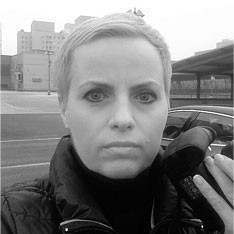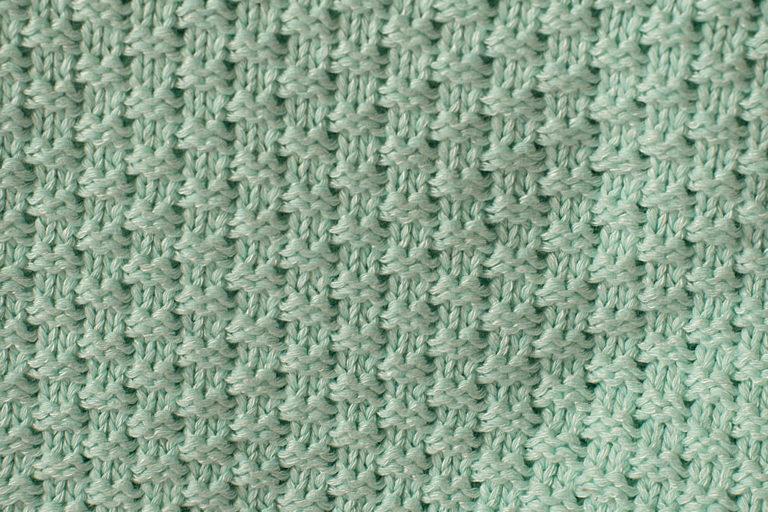Differences between knitwear and fabric
and why do I need this knowledge.

by Kasia Korkosińska
This is the fundamental problem, why do I need to know the differences between knitted fabrics and woven fabrics, why do I need this knowledge, after all, I am not a fiber maker, why do I need to know this? Well, you are a user
and you have your own preferences, you like and prefer certain things, you avoid other things,
you just don't like them.
If you want to buy a product, you have to name it appropriately. Once upon a time
in the store, the saleswoman helped you choose the right product based on the description you provided.
Now you need to enter the most precise term in the search engine for the system to give you the right answer.
Nowadays, many manufacturers have their online stores. There, the products are described by experts who use industry language. Sometimes without even realizing that the average buyer confuses the terms or sometimes does not know them at all.
It happened many times that a customer wanted to buy a blanket. He emailed the company asking if we were a manufacturer of woven blankets. In response, he received information that we were a knitting factory and did not have a weaving mill.
After several such questions, I decided to ask the potential customer if he had a photo of the product he was looking for. Then it turned out that the customer was looking for a blanket, not a woven one, but a knitted one. I don't even know how many people I turned down because of confusion.
Misunderstandings were less frequent about hats, because then it was easier to guess from the context what the customer was looking for. However, this ease concerns the person, but not the Internet search engine.
Differences between knitwear and fabric.
It is not at all that simple to accurately define these two methods of yarn processing. It used to be that you could take the material in your hand and check whether
Will it be possible to stretch it? If it was elastic, then knit it, and if it was stable
it's fabric.
Everything became complicated in 1939, when the American company DuPont invented nylon.
With the development of textile technologies and the production of synthetic yarns, looms (weaving machines) and knitting machines changed. Fabrics with the addition of elastic fibers began to be woven. Therefore, now the old and simple method of checking does not work.



How to distinguish knitwear from fabric?
The simplest way to determine this is by the way the product is created. Knitting is done and fabric is weaved. When you look at the product, notice how the threads are arranged. In fabric they intersect, in knitwear they form a V-shape. The fabric is created by the intersection of two warp and weft threads. To produce fabric, it is necessary to prepare warp shafts,
on which the appropriate number of threads are wound next to each other to create the width of the fabric. The length of these threads determines the length of the fabric.
The threads inserted between the warp threads are called the weft and it creates the pattern on the fabric.
Knitted fabric is created by creating stitches. Depending on the way they are made, we distinguish between warp and weft knitting. The stitches in warp knit fabric are connected vertically, and in weft knit fabric - horizontally. For warp knit fabric (e.g. elastic bandages, curtains), just as with fabric, you need to prepare a warp shaft, this problem does not exist with weft knit fabric (e.g. sweaters, hats), just one or a few threads of yarn and you can start production.
What is better, knitwear or fabric?
What is better, knitwear or fabric?
Each of these materials has advantages and disadvantages.
Fabrics are more durable in use and more resistant to stretching than fabrics. More resistant to mechanical damage. The disadvantage is that they are stiffer, do not hug the body and do not allow freedom of movement.
Knitted fabrics, on the other hand, are more delicate to use and deteriorate and deform faster.
The advantage is that they adapt well to the shape of the body because they are flexible and stretchable. The highest knitting technologies allow the product to be made in one element without the need for stitching, which gives incredible perfection in the appearance of the product. At the design level (sweater, hat, scarf, blanket, gloves, etc.), each knitted fabric is treated as a unique product.
It is believed that the knitting technique is older than the weaving one.
We don't need any tools to make the simplest knitwear,
All you need are your fingers and a piece of curved stick. So produced
the product can be washed and a new one made. This action can be repeated many times.
Because knitted fabrics are delicate, they deteriorate easily, which is why it has not been preserved
too many knits from ages past.
To create fabric, you first need to set up a weaving workshop.